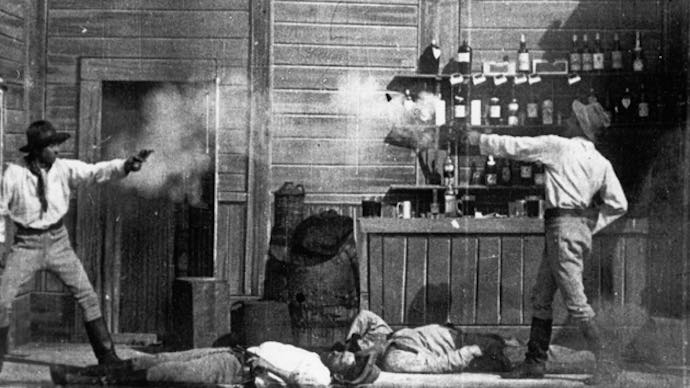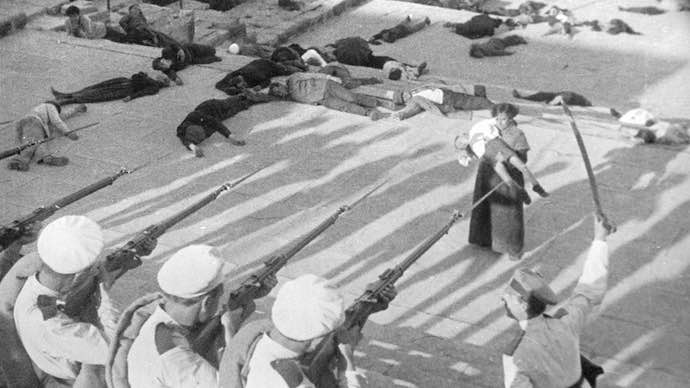Who remembers the silent era of film? Nobody, pretty much. The silent age has, obviously, passed beyond living memory for the most part.
Sure, there have been a few motion pictures since the invention of "talkies" that have used the silent technique, such as 2011's Academy Award-winning film The Artist. But practically speaking, silent films are history—"too artistic" for modern box office viewers.
Have you ever wondered what the silent movie era was actually like? Are there any masterpiece silent films that would still be considered great if they came out today? Well, you'd be surprised how many silent films are still considered among the industry's most beloved classics.
From Charlie Chaplin to Fritz Lang, let's revisit the beginning years of cinema and the silent films of the era that still hold up today.
The Rise and Fall of the Silent Film Era

The silent film era began in 1906 with Charles Tait directing The Story of the Kelly Gang in Australia. As the first-ever feature-length movie, The Story of the Kelly Gang was received well and succeeded financially.
But it wasn't until 1915 that so-called "movies" began to catch on as a mainstream artform. That's when D.W. Griffith made The Birth of a Nation, after which the American film industry was truly born.
Griffith had proven the viability of feature-length movies in America. From then on, film studios operated on a new level and were willing to hire filmmakers to create their visions as feature-length narratives.
The following 15 years saw the rise of Hollywood's most memorable stars, with Charlie Chaplin, Buster Keaton, and Greta Garbo all launching their careers during the silent film era. Unfortunately, many silent film stars couldn't translate their star power to "talkies" come the 1930s.
And by the mid-1930s, the silent film era was done. Audiences had moved on to movies with audible dialogue, marking a landmark shift in filmmaking technology that forever changed the landscape of cinema.
Which is a shame, because silent movies still have much to offer. They're more than just pretentious works of art for snobby cinephiles to gawk over. Indeed, the silent film era gave us some of the finest movies ever produced, many of which are worth watching today.
Keep reading for our picks of the best classic silent movies that are worthy of their reputation and still hold up today.
4. Modern Times (1936)

Charlie Chaplin's last appearance as The Tramp is his finest effort, if you ask me. By 1936, talkies had been around for nearly a decade and silent films had been all but pushed out of the industry—but Chaplin continued producing them, ignoring talkies all the way to the early 1940s.
And we're glad he did! Modern Times is a harsh warning of modernization and mechanization to those who work in factories everywhere.
In this final tale of his iconic character, The Tramp finds Ellen and they fall madly in love with one another. But as the pair try to make their way in life, they're constantly being arrested.
Ever the optimist, Charlie Chaplin's The Tramp delivers an ending that feels hopeful in a world that's often bereft of it.
Modern Times has the Chaplin brand of humor in spades, as well as the heart that Chaplin skillfully weaves throughout his comedies. That's why the film endures and remains relevant to this day.
3. City Lights (1931)

Once described as having "the most beautiful final shot ever put to celluloid," City Lights was Charlie Chaplin's favorite film amongst the many films he made throughout his career.
The story follows his iconic character of The Tramp and his attempts to raise money to pay for a blind girl's operation so she can see.
As The Tramp makes his way through the film—hilarious mishaps in tow—the character becomes a figure for more than comedy. He's not interested in anybody else. He only wants to help her, which imbues a kind of depth that potently projects itself across the screen.
Yet even viewing it today, the comedy remains wonderfully engaging. And that acclaimed final scene? It still draws tears from the eyes.
2. Metropolis (1927)

The original dystopian sci-fi movie, Metropolis wasn't a hit upon release in 1927. Instead, it was an early example of a slow-burn movie—one that, upon repeat viewings, became a cinematic titan.
Fritz Lang's film showcased storytelling on a huge scale, with the picture focusing on the rise of an underappreciated and undervalued workforce that was helped by Freder, the son of the master of Metropolis.
The picture's narrative encompasses the sheer scale of the massive fictional city and delivers a chilling warning on social class divide.
Today, Metropolis still exudes an Orwellian attraction. The heroic actions of a few stand between a cold and uncaring world and the caring nature of the human species, keeping the film relevant almost a century later.
1. Battleship Potemkin (1925)

Telling the real-life story of the Russian warship and the mutiny of its crew against the officers aboard, the 1925 film Battleship Potemkin is often ranked as one of the greatest movies ever made.
Sergei Eisenstein's direction remains a forward-thinking and edgy example of filmmaking in the silent era. He brilliantly showcases the conditions endured by the sailors aboard the ship, which led to the famous mutiny (and arguably the revolution itself).
Battleship Potemkin is a highly influential film that inspired several of cinema's great filmmakers, and also served as an early example of how to make propaganda films in line with the government's agenda.
Nevertheless, Battleship Potemkin is a cinematic flagpole, if for no reason than it being one of the earliest epic films. The 75-minute runtime makes it highly approachable for any first-time silent film viewer.


